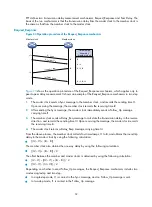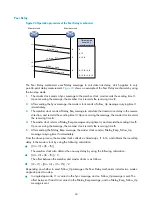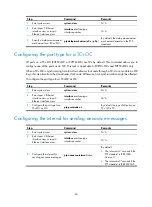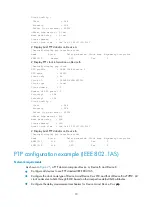
71
Displaying and maintaining PTP
Execute
display
commands in any view and the
reset
command in user view.
Task Command
Display PTP clock information.
display ptp clock
Display the delay correction history.
display ptp corrections
Display information about foreign master nodes.
display ptp foreign-masters-record
[
interface
interface-type
interface-number
]
Display PTP information on an interface.
display
ptp
interface
[
interface-type
interface-number
|
brief
]
Display PTP statistics.
display
ptp
[
brief
|
interface
interface-type
interface-number
] [
|
{
begin
|
exclude
|
include
}
regular-expression
]
Display PTP clock time properties.
display ptp time-property
Clear PTP statistics.
reset
ptp
statistics
[
interface
interface-type
interface-number
]
PTP configuration example (IEEE 1588 Version 2)
Network requirements
As shown in
, a PTP domain comprises Device A, Device B, and Device C.
•
Configure all devices to use PTP standard IEEE 1588 Version 2.
•
Configure the clock node type of Device A and Device C as OC, and that of Device B as P2PTC. All
clock nodes elect a GM through BMC based on their respective default GM attributes.
•
Configure the delay measurement mechanism for Device A and Device C as
p2p
.
Figure 25
Network diagram
Configuration procedure
1.
Configure Device A:
# Specify the PTP standard as IEEE 1588 Version 2.
<DeviceA> system-view
[DeviceA] ptp profile 1588v2
# Specify the clock node type as OC.
[DeviceA] ptp mode oc
XGE1/0/1
Device A
Device B
Device C
XGE1/0/2
XGE1/0/1
XGE1/0/1
OC
OC
P2PTC
PTP domain
Summary of Contents for 5920
Page 86: ...76 XGE1 0 2 N A P2P Two 0 ...
















































